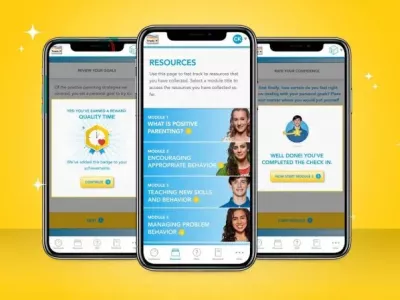Helping Kids To Navigate Life’s Challenges (offline And Online)

You know how it is – most two-year-olds you see these days seem to be able to use a touch-screen before they can talk. So it’s no wonder parents are becoming anxious at the thought of what their kids might accidentally encounter online.
Although there’s plenty of good and safe content out there, there are also many sites where kids will innocently discover content that’s inappropriate and distressing, or be contacted by others without you knowing. It’s very important to monitor and supervise children’s use of the internet, particularly when they are younger and moving into pre-adolescence.
Just as with other rules of social etiquette which need to be taught, explained and modelled by parents, parents need to teach kids what is safe, reasonable and appropriate when it comes to communicating via the internet and social media, through email, and on phones.
YOU CAN’T BE AROUND ALL THE TIME
Many parents feel that the answer is to install programs that enable blocking or filtering of websites and messages. There may be some merit to this, but there are millions of perfectly safe sites for your children to access on the internet and you don’t want to frighten kids so much that they can’t use it appropriately or they’re afraid to use the computer!
And as they get older, children also need to learn to navigate the web for themselves, and to manage and control their usage and what sites they go to and how they talk to others online.
SET THE RULES UP EARLY
From the get-go, it’s a good idea to have any online devices situated in a family area and make a habit of talking with kids about what they’re doing online. This includes phones - set the ground rules early on (and follow through) explaining that as a parent, you’ll be checking sites that kids have visited.
Things can also get out of control when parents just give up because they feel overwhelmed. So don’t be afraid of learning something new - stay up to date by asking your kids what they like doing online, again, from an early age so they’re used to it.
Think about whether kids really need a phone, and at what age. If they do, do they need full internet access? What rules can you agree on when it comes to supervising how they use their computer and phone? Sometimes children get in the deep end with something and feel as though they have to conceal it, so you end up with a problem that’s much bigger than it would otherwise have been if the supervision and conversation had been happening earlier.
Having said that, it’s never too late to talk about putting some new limits in place that you both agree on. It’s also very important kids know they can always talk to you about their concerns, even if they’re worried about getting themselves or someone else into trouble.
IF THERE’S A SITUATION…
Try not to panic or over-react if you think there’s an issue. If your child seems upset by something they’ve encountered online, tune in to their level of distress and monitor the situation. Take advantage of school and government resources that are designed to help you and your kids manage issues like cyber-bullying and staying safe online.
Strategies such as learning not to react and getting involved with other pursuits and friendships can be helpful, so consult a professional if you have specific concerns about your child.
It’s hard to imagine, but our great-grandparents must have had similar concerns about the car, the telephone and even radio. So while it’s important to be vigilant, try to keep things in perspective. A loving and secure family which encourages pro-social and caring behavior, good communication, emotional stability and resilience will help kids navigate the challenges of cyberspace, along with everything else.

